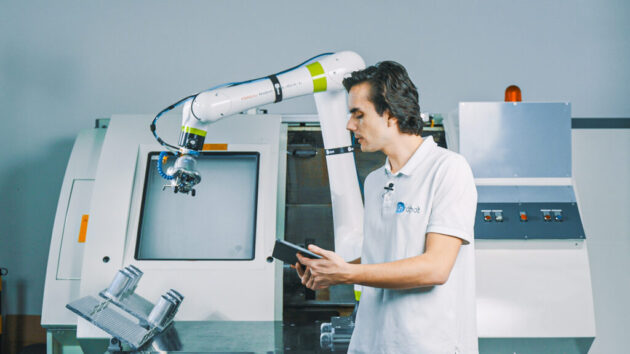
Manufacturing Automation: Tech talk: It’s the end of robot programming!
by Kristian Hulgard

The ‘no-programming’ approach democratizes collaborative automation and simplifies robot integration.

The ‘no-programming’ method simplifies the process of deploying collaborative automation on CNC machines by eliminating hours of repetitive, manual programming tasks. (Photo: OnRobot)
Industrial robot programming has evolved massively since the days of punch tape and paper-based flowcharts. Teach pendants existed back in the 70s, but they were clunky affairs, intimidating to non-experts, and not exactly user-friendly.
The 1980s brought usability improvements as pendant makers incorporated digital displays and more intuitive interfaces. At the same time, the rise of computer-based programming led to the emergence of all sorts of robot programming software, more user-friendly interfaces, offline programming, and CAD integration. Expert engineers were still required for the vast majority of industrial robot programming tasks, however.
And yet, despite incremental improvements in usability accumulating over time, robot programming methods stayed more or less the same until the emergence of collaborative robots (cobots) and lightweight industrial robot arms in the 2000s.
This article originally featured in Manufacturing Automation. Read the full version here.